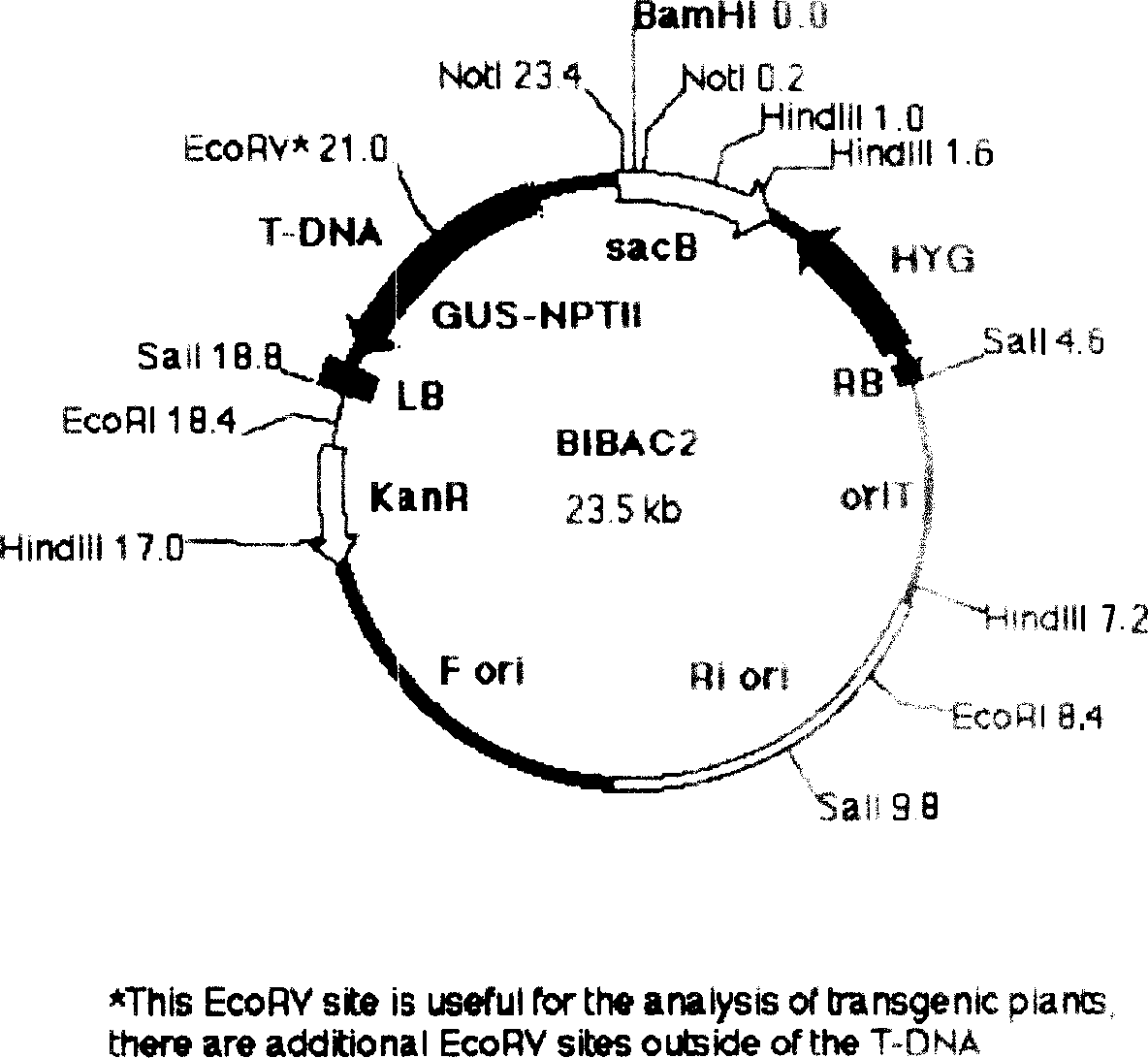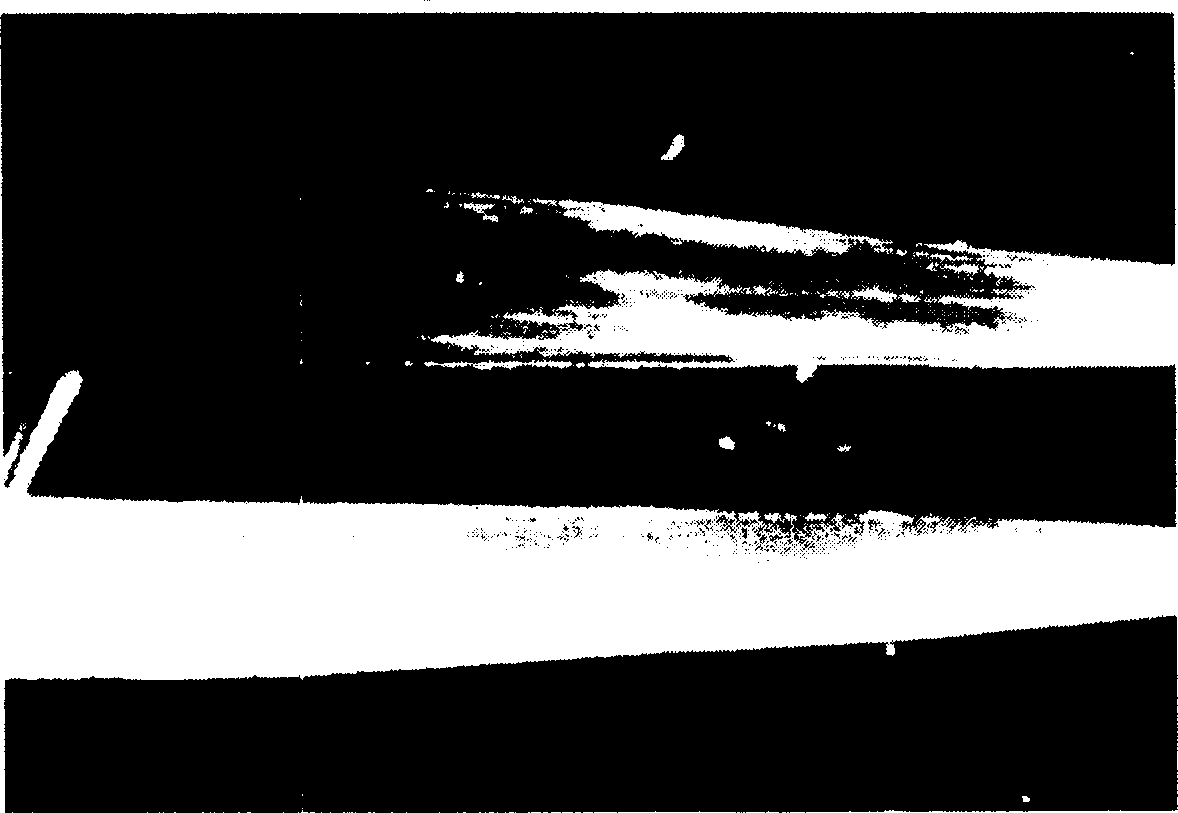Method for discovering wild rice beneficial gene using convertible large fragment genome library
A genome library and wild rice technology, applied in the field of rice variety improvement and breeding, can solve the problems of difficult gene reproduction, long breeding cycle, slow stability, etc., and achieve the effects of broadening the genetic basis, simple operation and short cycle.
- Summary
- Abstract
- Description
- Claims
- Application Information
AI Technical Summary
Problems solved by technology
Method used
Image
Examples
Embodiment 1
[0022] Transformation of cultivated rice 9311, R207, and Jin 23B using a transformable large-segment genome library of medicinal wild rice
[0023] (1) Taking medicinal wild rice as a donor plant, first prepare Megebase-grade large fragments of rice DNA by the agar embedding method. That is to use transformable artificial chromosome carrier (TAC, Transformedartificial chromosome) or binary bacterial artificial chromosome carrier (BIBAC, binarybacterial artificial chromosome) to clone by about 100Kb, and construct a medicinal wild rice large fragment genome library. The build process is as follows:
[0024] a. Preparation of large molecular weight nuclear DNA. Take 20 g of yellow rice seedlings, grind with liquid nitrogen, add 200 mL of 1×HB solution (0.01mol / L Tris-HCl, 0.08mol / L KCl, 0.01mol / L EDTA, 1mmol / L Arginine, 1mmol / L arginine, 0.5mol / L sucrose, 0.15% β-mercaptoethanol, pH=9.4~9.5), stir evenly, filter with 2 layers of gauze and 1 layer of Mirocloth, centrifuge at 180...
PUM
 Login to View More
Login to View More Abstract
Description
Claims
Application Information
 Login to View More
Login to View More - R&D
- Intellectual Property
- Life Sciences
- Materials
- Tech Scout
- Unparalleled Data Quality
- Higher Quality Content
- 60% Fewer Hallucinations
Browse by: Latest US Patents, China's latest patents, Technical Efficacy Thesaurus, Application Domain, Technology Topic, Popular Technical Reports.
© 2025 PatSnap. All rights reserved.Legal|Privacy policy|Modern Slavery Act Transparency Statement|Sitemap|About US| Contact US: help@patsnap.com



